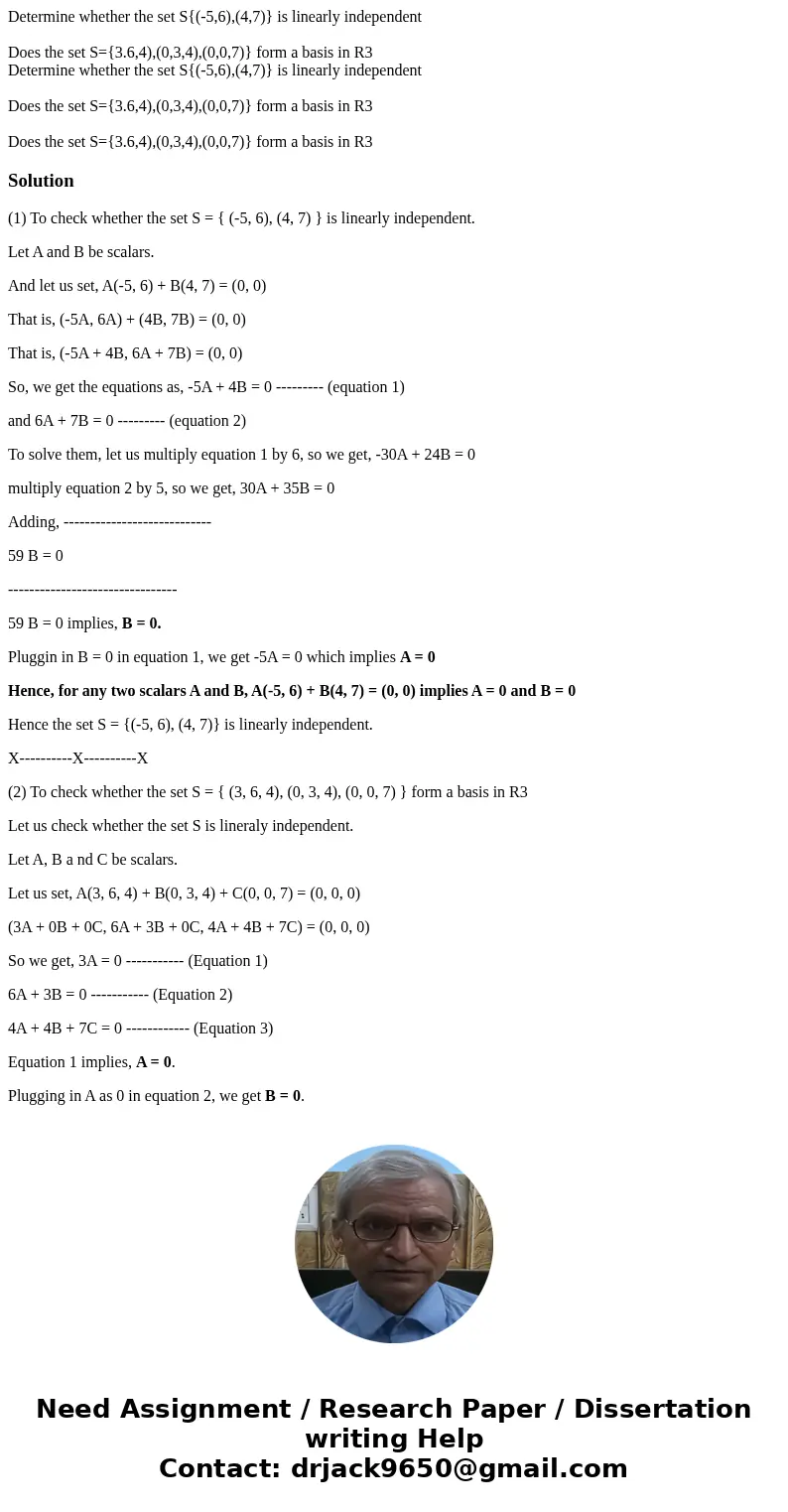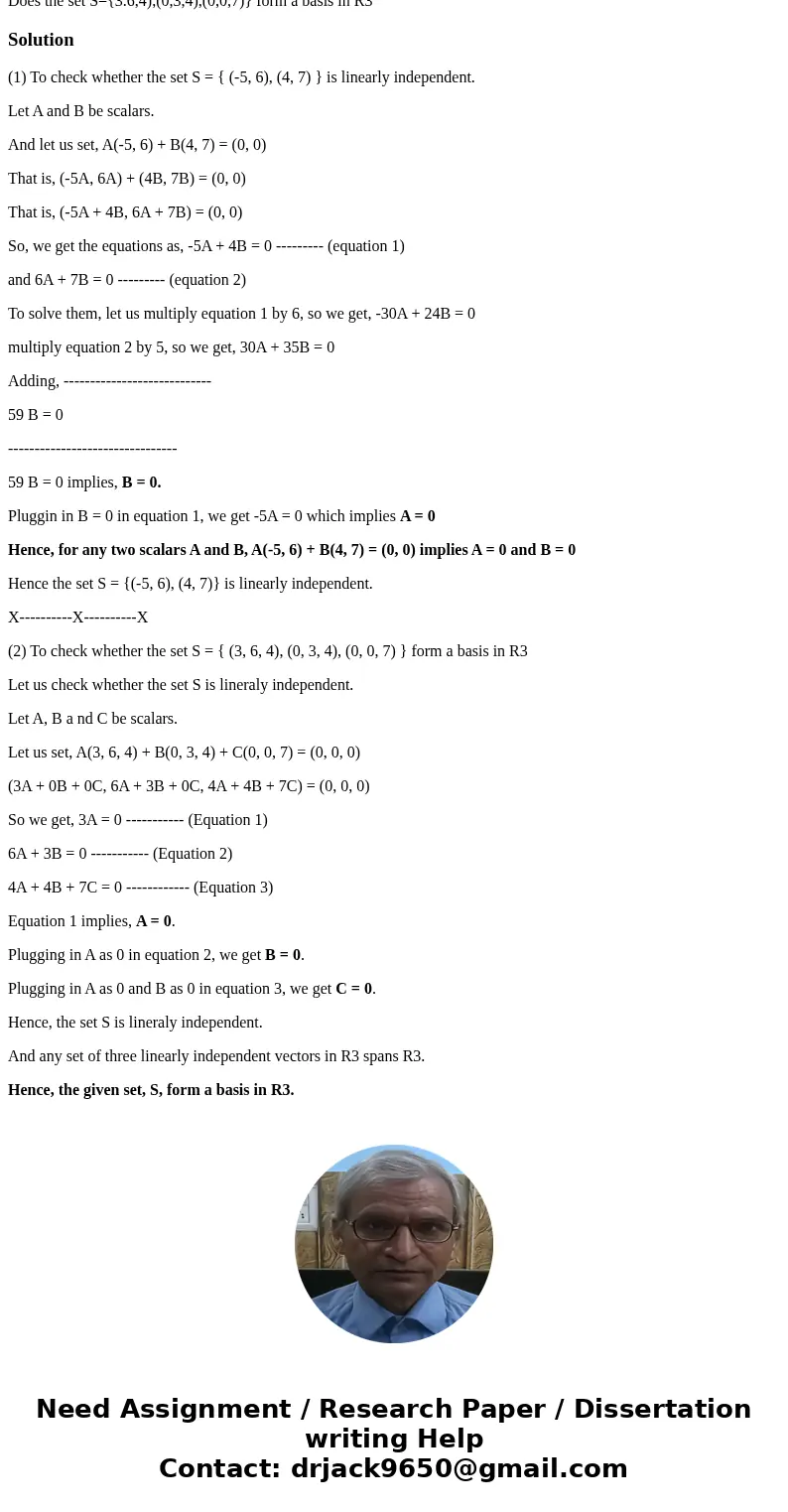Determine whether the set S5647 is linearly independent Does
Solution
(1) To check whether the set S = { (-5, 6), (4, 7) } is linearly independent.
Let A and B be scalars.
And let us set, A(-5, 6) + B(4, 7) = (0, 0)
That is, (-5A, 6A) + (4B, 7B) = (0, 0)
That is, (-5A + 4B, 6A + 7B) = (0, 0)
So, we get the equations as, -5A + 4B = 0 --------- (equation 1)
and 6A + 7B = 0 --------- (equation 2)
To solve them, let us multiply equation 1 by 6, so we get, -30A + 24B = 0
multiply equation 2 by 5, so we get, 30A + 35B = 0
Adding, ----------------------------
59 B = 0
--------------------------------
59 B = 0 implies, B = 0.
Pluggin in B = 0 in equation 1, we get -5A = 0 which implies A = 0
Hence, for any two scalars A and B, A(-5, 6) + B(4, 7) = (0, 0) implies A = 0 and B = 0
Hence the set S = {(-5, 6), (4, 7)} is linearly independent.
X----------X----------X
(2) To check whether the set S = { (3, 6, 4), (0, 3, 4), (0, 0, 7) } form a basis in R3
Let us check whether the set S is lineraly independent.
Let A, B a nd C be scalars.
Let us set, A(3, 6, 4) + B(0, 3, 4) + C(0, 0, 7) = (0, 0, 0)
(3A + 0B + 0C, 6A + 3B + 0C, 4A + 4B + 7C) = (0, 0, 0)
So we get, 3A = 0 ----------- (Equation 1)
6A + 3B = 0 ----------- (Equation 2)
4A + 4B + 7C = 0 ------------ (Equation 3)
Equation 1 implies, A = 0.
Plugging in A as 0 in equation 2, we get B = 0.
Plugging in A as 0 and B as 0 in equation 3, we get C = 0.
Hence, the set S is lineraly independent.
And any set of three linearly independent vectors in R3 spans R3.
Hence, the given set, S, form a basis in R3.


 Homework Sourse
Homework Sourse